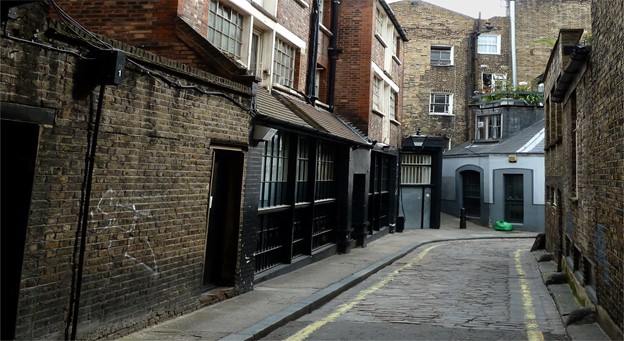

Author: Kent Moors, Ph.D.
Before returning to where the Spy Tale series ended last time, an update. I have begun (protracted) discussions with “mother’s” legal counsel and the powers that be about the extent of some upcoming writings I have in mind. The recent accord reached has significantly broadened what I can write about. But there are additional matters I want to address. These are going to expose touchier operations warts and all, along with where, only partially euphemistically, some of the bodies are buried. That has occasioned expected pushback.
There are several matters at issue in these conversations. First, there is the ongoing concern over protecting sources and methods. This is a continuous worry and one I fully support. Second, I intend to write about several of the less savory episodes in my career. That creates an unsettling feeling among those still in service, many of whom are now higher ups but came on board after the active field experiences that will come to form the environment for the intended writings.
Third, forming the heaviest opposition, is a matter well known to anybody who has ever worked in an entrenched organization. There remain posteriors to cover. Finally, while my active field service days are over, I am still subject to being called up on what are for paperwork purposes called “advisory status missions conducted in areas to include those defined as a contested environment.”
I may, therefore, need somebody someday to cover my back in the field.
The discursive process is ongoing.
This entry in the Classified Intelligence Brief Spy Tale series completes last week’s story about a Russian use of natural gas proceeds to fund “other” projects abroad.
In “Tracing Shadow Russian Energy Funds in ‘The City,’ Part I, Classified Intelligence Brief, October 13, 2021) I wrote:
[T]his time the tool was natural gas contracts almost exclusively. That brought into the crosshairs an institution with which I would have a close interest for some time thereafter. It also obliged that I hightail it back to London not long after returning to the States from Frankfurt.
Then as now Russian export natural gas contracts came from Gazprom, the largest company in Russia and the largest natural gas concern in the world. While Gazprom stock was (and is today) traded publicly on the Moscow Stock Exchange and, via depository receipts and depository certificates, elsewhere in the world, the Russian government completely controlled the company.
It was not unusual for the Kremlin to use Gazprom and its gas as direct (and sometimes heavy handed) tools of its global foreign policy. Upon occasion, the company would telegraph to world markets what the officials back home either could not or would not declare openly.
“Gazprom watching,” therefore, went beyond simply energy matters.
Contacts among European-based secondary energy traders provided us with the initial word that something unusual was emerging. Gazprom’s export gas contracts were being “paired” with equipment, consultancy, technology, and personnel exchange agreements coming in the opposite direction in quite unusual ways.
First, these “twins” on paper were moving into regions where there were no ongoing projects to justify them.
Second, the gas volume moved was once again larger than the contract specified.
Third, the considerations that were supposed to be coming in the opposite direction rarely actually arrived.
Strange, Gazprom appeared to be sending gas without full payment while at the same time paying for services and material it never received. Made no sense for a company to act this way, even if it was Russian and had big brothers back home to pay its suspect bills.
What made all of this even more unusual was the size. These contracts were expanding. Now Gazprom would run contracts through major trading companies based in Europe (primarily Switzerland, the Netherlands, and Italy) in which Russia directly or indirectly had a heavy ownership interest. These traders would become the party of record for the hard currency transfer of gas to the contract’s end client.
What we were zoning in on, however, was secondary trades once the big players had made their moves. My interest centered about this building, the London headquarters of Gazprom Marketing & Trade (GM&T), the place from which the Russian natural gas giant would pre-finance international trade:


This is the conduit through which the Kremlin would control the flow of excess gas sales. GM&T had other offices in Manchester (UK), Paris, Singapore, Hertogenbosch (the Netherlands), and Houston. If there is more volume actually available than the contract specifies (if, in other words, Russia was moving additional “shadow” gas out to generate under the table proceeds for other purposes), Gazprom’s central trading arm located in Zug, Switzerland would send out the availability and tender specifics.
I ended last week’s entry by saying:
The interest really took off when tracing of the funds from shadow gas sales on the spot market began passing through GM&T in London, then to a network of financial houses in “The City” (London’s financial district), and onward to foreign locations.
This was quickly becoming much more than officials back in Moscow feathering their nests. Something else was afoot. And some of it was touching close to home.
Because a portion of the money had been transferred to Texas.
I pick up the narration at this point.
“The City” is a several mile square area encircling the Liverpool Street train station in which are located more finance houses than in any other comparable area in the world. The banks, investment firms, brokerages, all manner of insurance and reinsurance companies, as well as related entities made this the primary location to raise funding for international projects.
The London Stock Exchange (LSE) and the Bank of England are also located there, in the shadow of St. Paul’s Cathedral. It certainly was the number one place for financing worldwide crude oil and natural gas production and transport contracts, and I would make use of it for clients in later years.


These days, the aftermath of Brexit has prompted the transfer of some of that action to other locations on the Continent, such as Paris, Frankfurt, and a quickly rising network of cross-border banking involving entities in Switzerland, Italy, Luxembourg, and the principality of Andorra (in the Pyrenees between France and Spain).
But when the events I am describing today were unfolding, The City was still the place to be. Until the undermining brought about by Brexit, and the profound reexamination of London as the location from which to access European and global finance, I would advise and structure several oil deals there in my later career.
There was, however, a caveat in all of this. Given the curious UK banking law restrictions on inquiring into the sourcing of certain private funding, The City was also awash with suspect money. Much of this would cancel out by the time a deal was on formal offer. In other words, by the time you would sit down at the conference table in some City board room, the money at issue could be documented. But not always.
And it is just this situation that would animate the tale we are considering today.
As I noted last time, my network of assets (or agents) –foreign citizens working for us – was picking up large amounts of funds being transferred using the GM&T conduits that had little or nothing to do with requirements related to actual consignments of natural gas and the payments for same. Dummy and padded contracts were being used for something else.
Given the extensive international outreach of GM&T activities and offices, the money was moving into areas that had little to do with any immediate or even prefinance arrangements for accrual of natural gas sales. This had the earmarks of covert funding for covert operations.
I had set up a standard system of overt locations I would use for meetings with network members (some of whom are still with me these days in the contact network I use for Sigma Trader and PRISM Profits subscribers). There was considerable intel being gathered and it all pointed to a Kremlin move that had more to do with Russian foreign policy targets than it did with any genuine Gazprom export contracts.
Two of these sites were among those I had used for years whenever there was a need to meet with agents. They had the advantage of being in the open but excellent for quick exchanges. One was the historic Newman Passage in Westminster. It is a rather innocuous pedestrian way in use since at least the late 1600s connecting Newman and Rathbone Streets. In earlier periods, Newman Passage would house tradesmen, especially leatherworks and tallow vendors (candles). A bit later, it would have a few of the more popular brothels in the city. And then more recently, it has found its way into movies.
I would use this site for meetings with agents providing material from public and foreign offices.


The other location was within The City itself. It was a place I often employed later for my own purposes while conducting business in the financial center. It has the advantage of being crowded, especially with folks eating their lunches in the center. Seeing impromptu conversations there was hardly unusual. This is Paternoster Square adjoining the LSE. Below is a shot taken more recently, following a series of restorations that occurred after the period in which this this Spy Take takes place.


However, elsewhere, our activity was rapidly intensifying. We had a particular interest in funding transferred to the GM&T office in Houston.
Since early 2018, GM&T has had its Houston office in Three Allen Center downtown, 333 Clay Street, Suite 3650. Financial dealings, however, for several years continued at their earlier location in the TC Energy Complex, Suite #2500 at 700 Louisiana Street.


I had initially estimated that upwards to $200 million had been moved (either outright or via banking commitments) from London to Houston using a variety of investment and financial houses in The City. But the consensus was increasing that such a figure may only have been the tip of the iceberg.
If such a transfer had been detected today, suspicion would fall quickly on attempts to subvert US elections or the financing of trolls to undermine domestic public opinion. At the time we were looking into this, those were tools not really available (with an exception to be mentioned below).
Unlike what was being considered elsewhere, in which the funding may have been going into popular political fronts and other physical moves to unseat governments, the Houston move had other objectives in mind.
Moscow was mobilizing a war chest to raid American domestic oil companies, targeting operating companies in several Texas basins for either acquisition or primary ownership interest.
We were just at the beginning of the shale oil and natural gas production boom in the US. Nonetheless, the experts back at Gazprom, its oil producing subsidiary Gazprom Neft, and the parallel Russian state-controlled crude oil major Rosneft, had already begun to calculate what impact accelerating American production might have on Russian export oil and natural gas interests.
Then there was also the need for Russian companies to access the latest drilling and processing technology being developed in the US. Similar production in Russia would be possible by tapping layers below the traditional Western Siberian fields, but much of that required the ability to tap heavy oil and rock sequestered deposits for which Gazprom and Rosneft had no experience.
Some of the objects, therefore, might have business validity. The problem was that such objectives would still be connected to the Kremlin’s broader policy interests.
Then there was another wrinkle developing. As I remarked above, there was an application that had certain dimensions similar to the contemporary Russian moves at undermining American public discussion.
A public advertising campaign began in Texas aimed at generating popular opposition to shale production and its accompanying fracking on health and environmental grounds. Now, such moves were hardly new. What made this one different was its size and the ability to trace back funding to several shell companies created at known GM&T front operations.
Well before social media opinion became a political weapon, Moscow was creating the architecture for undermining consensus among the US population.
The overall dual objective (financing the ownership takeover of specific American oil and gas companies and changing public opinion) now required a response. And it came in short order. Review of merger and acquisition (M&A) finance was made a priority, with suspect moves segregated and nullified. A separate campaign to oppose and undermine the public opinion initiative was also undertaken.
Since these were domestic moves, the agency could play no (at least official) role. They also involved the use of tactics I found questionable. After all, I personally believe that there are some environmental concerns over fracking that should be explored. I also take a rather critical view of under the table transfers of funds by government agencies to assist private sector interests in padding their own pockets.
But in matters like the ones confronting us during this episode it is not unusual for the reaction to be painted with a broad brush.
There was at least one aftermath of the GM&T fund transfers that would have a much darker side. It occurred in Africa and resulted in a rash of ethnic cleansings, a protracted civil war, and genuine human misery. We responded to this directly and with some prejudice. Some of the results of our actions there would be difficult to live with.
This is on the list of those contested subjects I should someday like to write about.


Dr. Kent Moors
This is an installment of Classified Intelligence Brief, your guide to what’s really happening behind the headlines… and how to profit from it. Dr. Kent Moors served the United States for 30 years as one of the most highly decorated intelligence operatives alive today (including THREE Presidential commendations).
After moving through the inner circles of royalty, oligarchs, billionaires, and the uber-rich, he discovered some of the most important secrets regarding finance, geo-politics, and business. As a result, he built one of the most impressive rolodexes in the world. His insights and network of contacts took him from a Vietnam veteran to becoming one of the globe’s most sought after consultants, with clients including six of the largest energy companies and the United States government.
Now, Dr. Moors is sharing his proprietary research every week…knowledge filtered through his decades as an internationally recognized professor and scholar, intelligence operative, business consultant, investor, and geo-political “troubleshooter.” This publication is designed to give you an insider’s view of what is really happening on the geo-political stage.
You can sign up for FREE to Classified Intelligence Brief and begin receiving insights from Dr. Moors and his team immediately.
Just click here – https://classifiedintelligencebrief.com/






